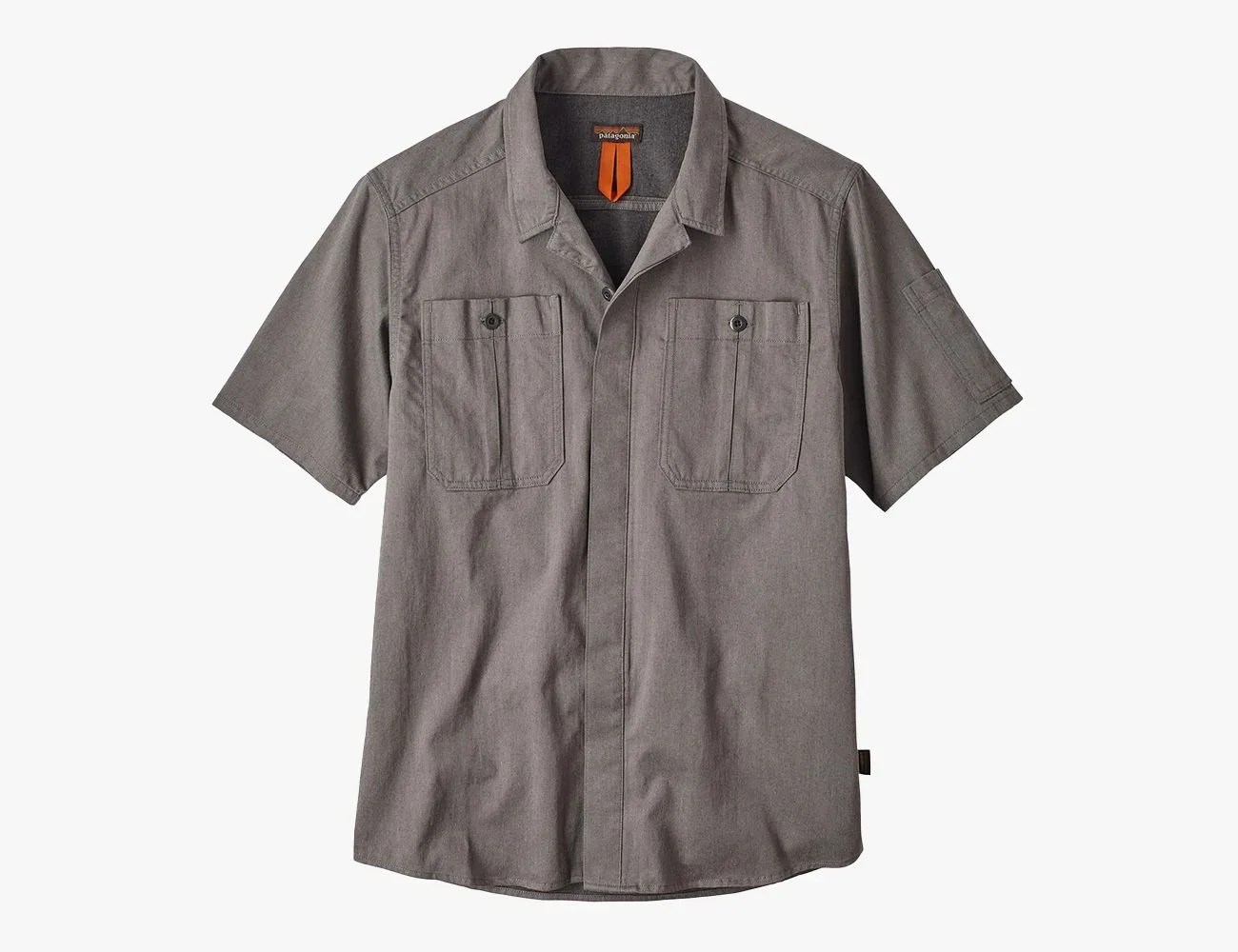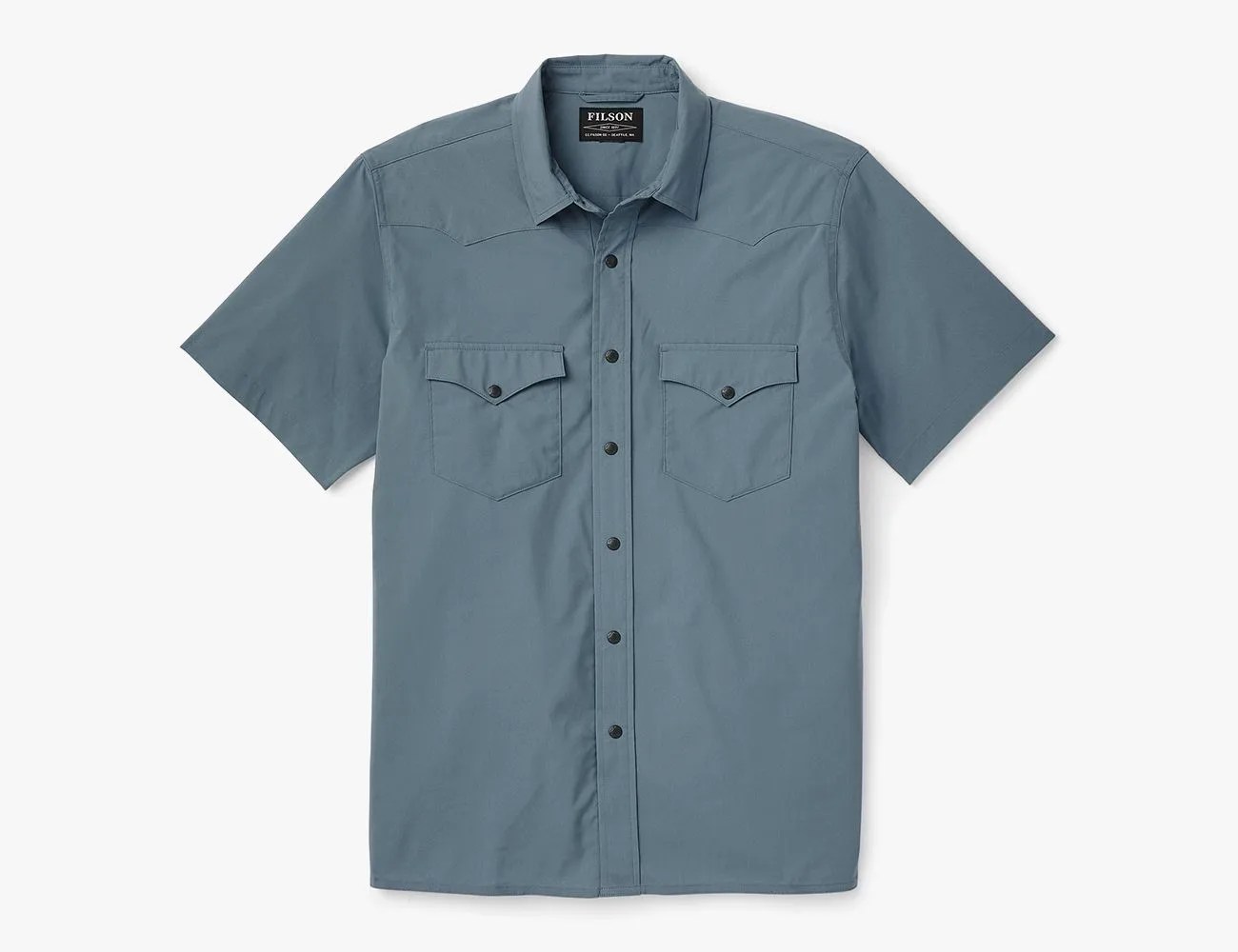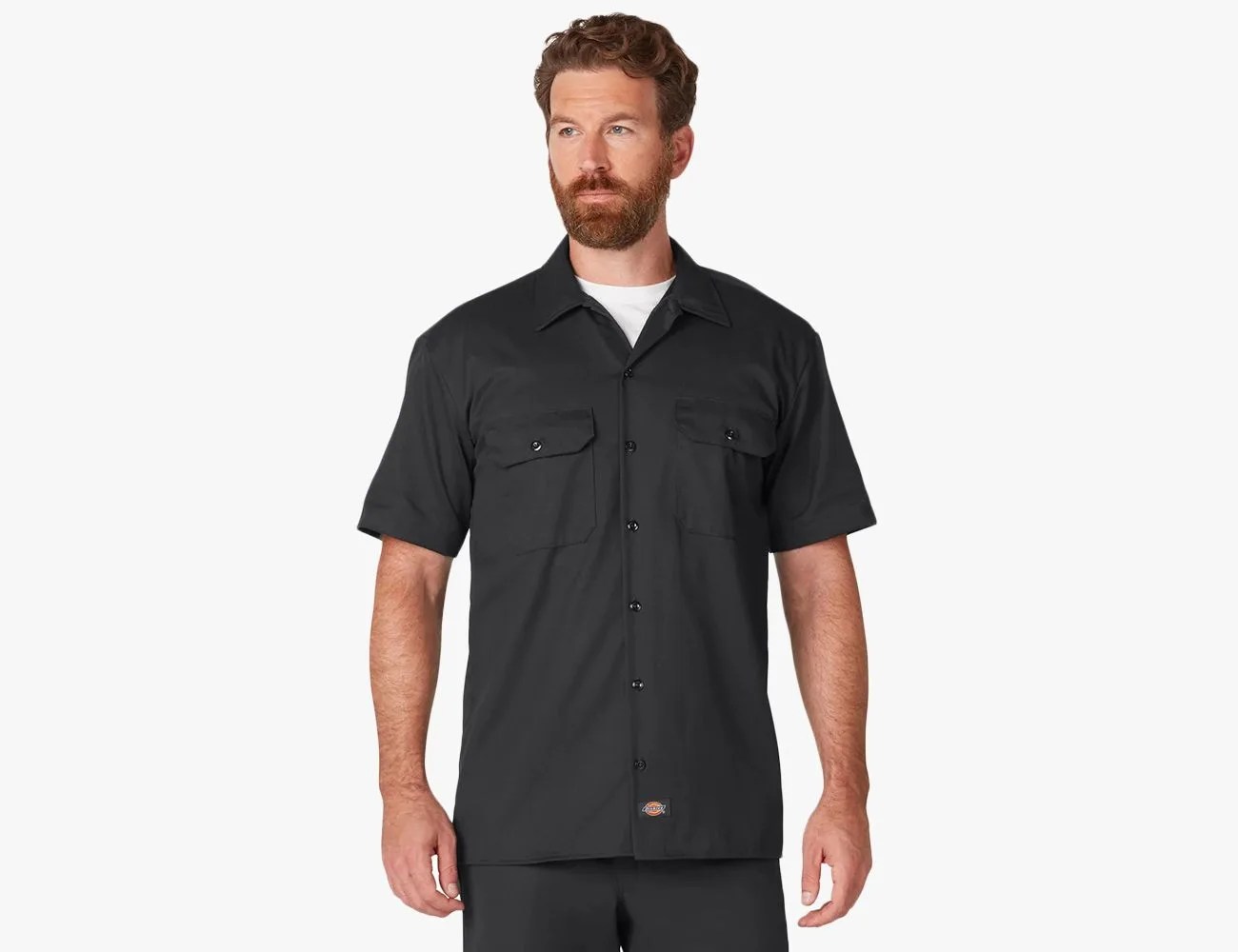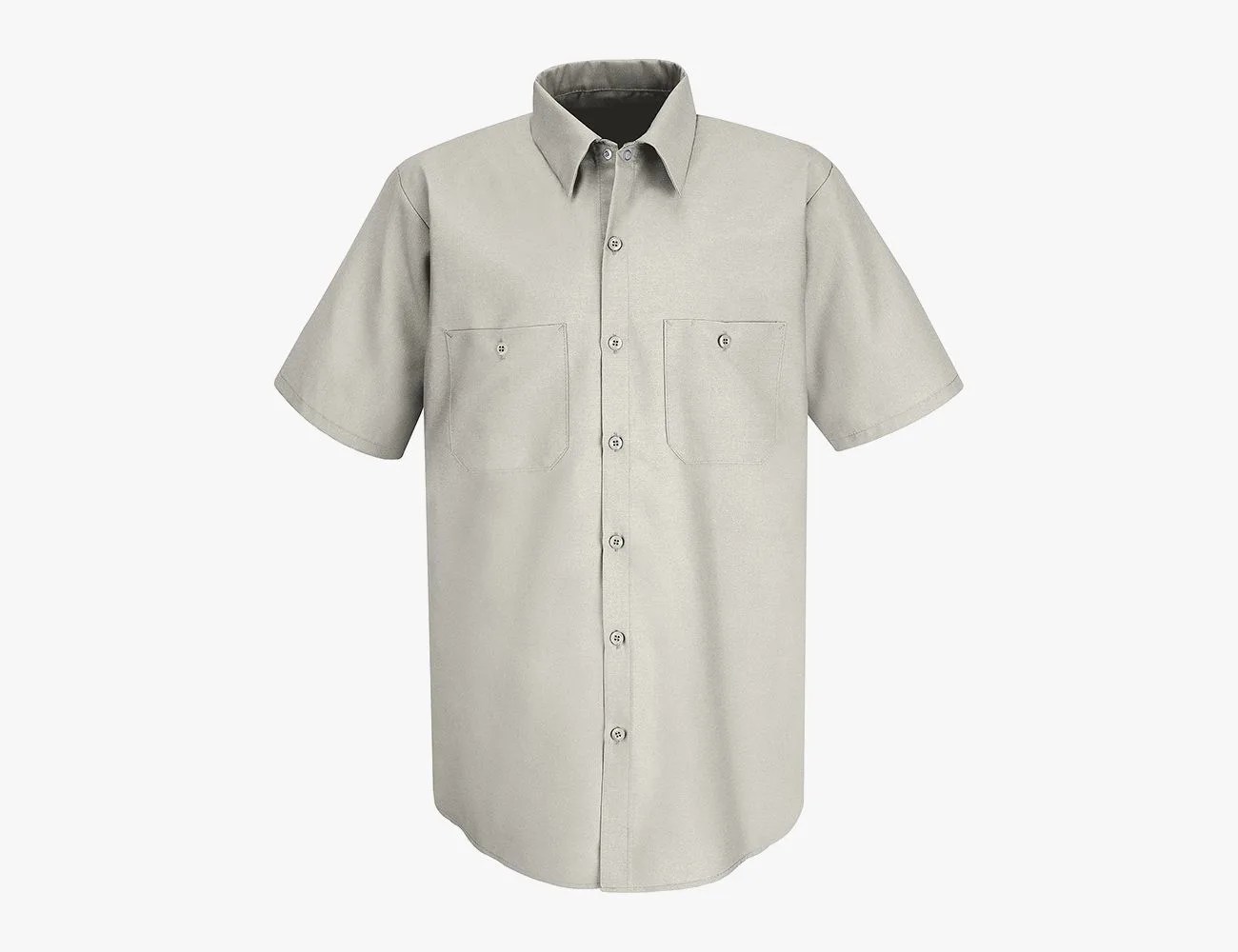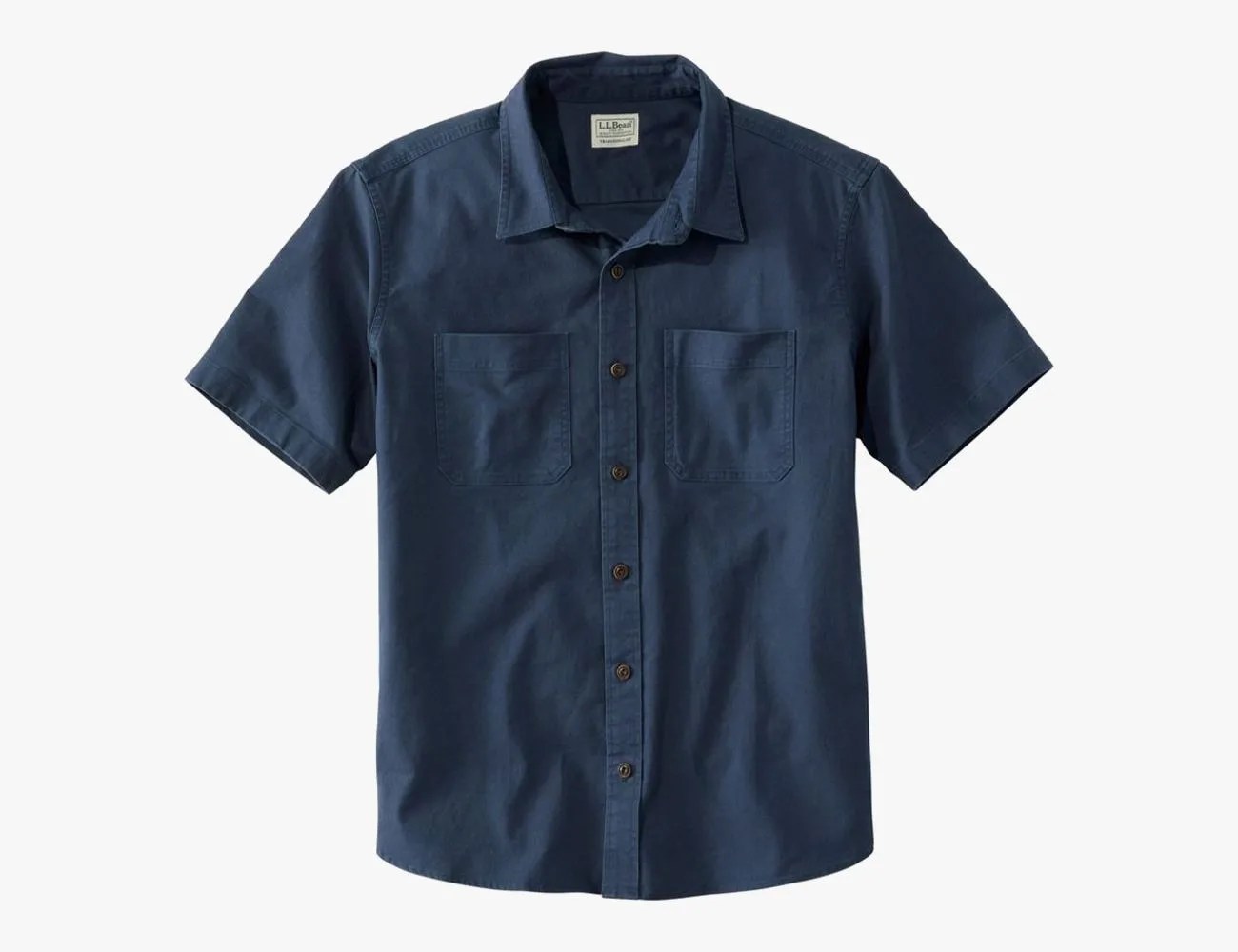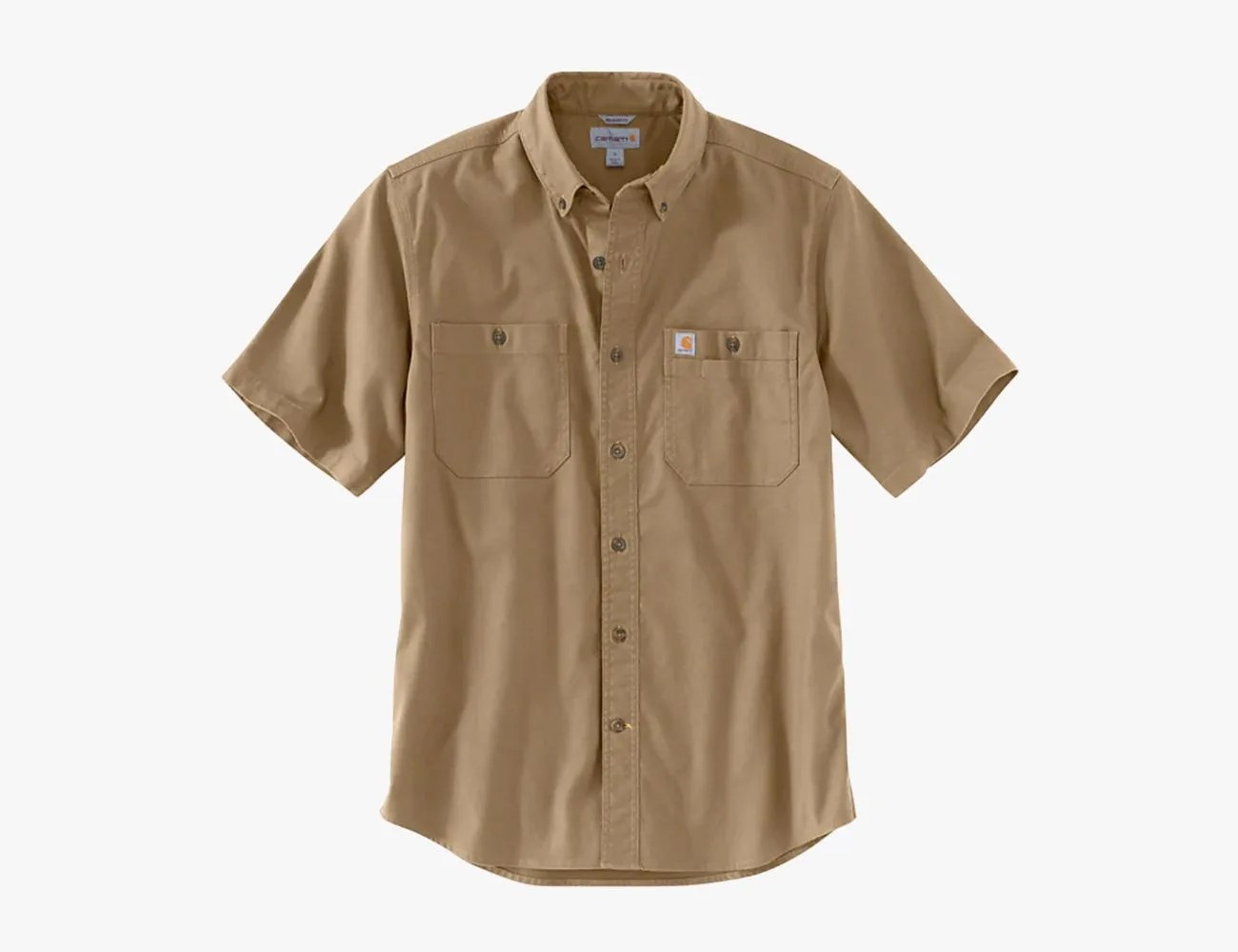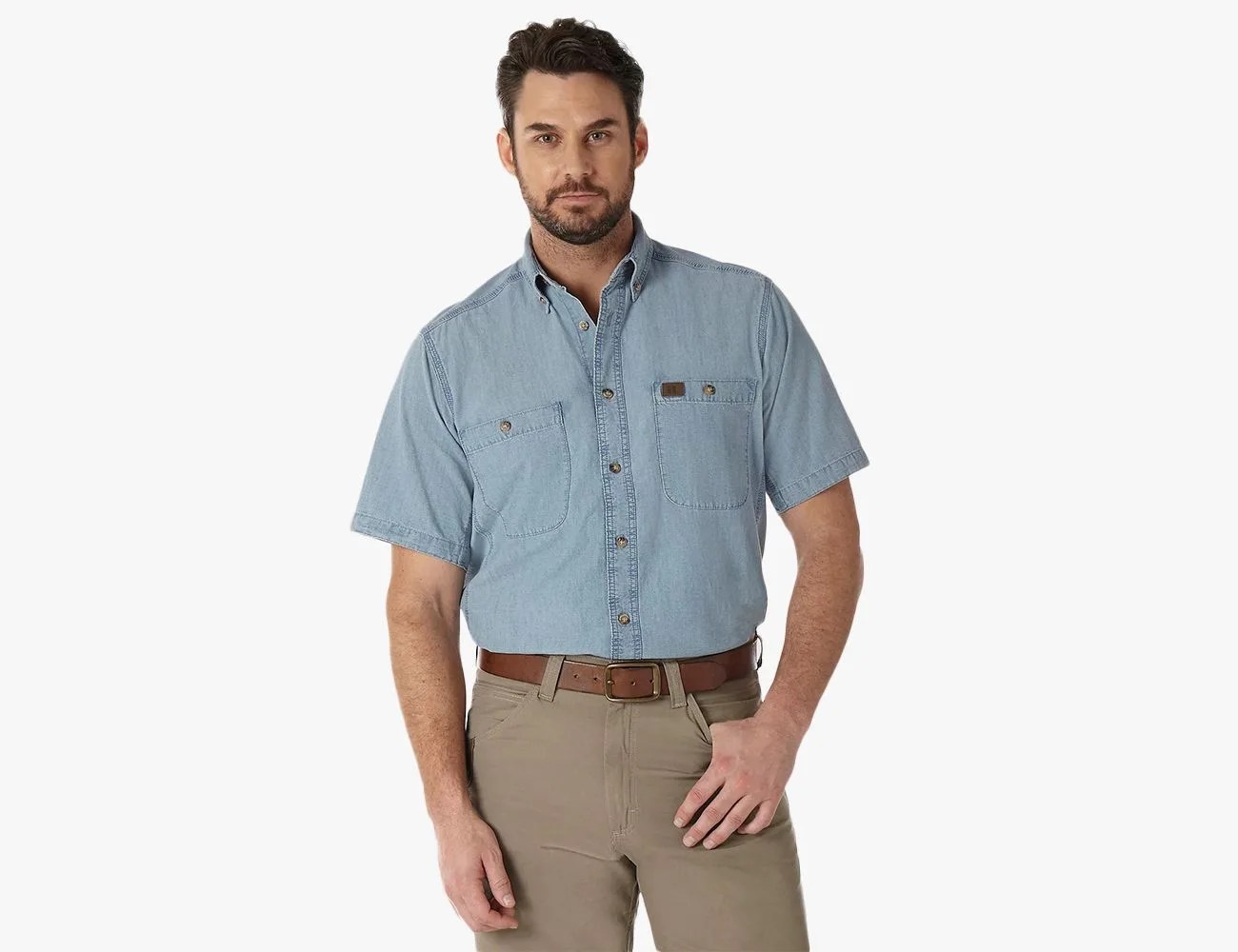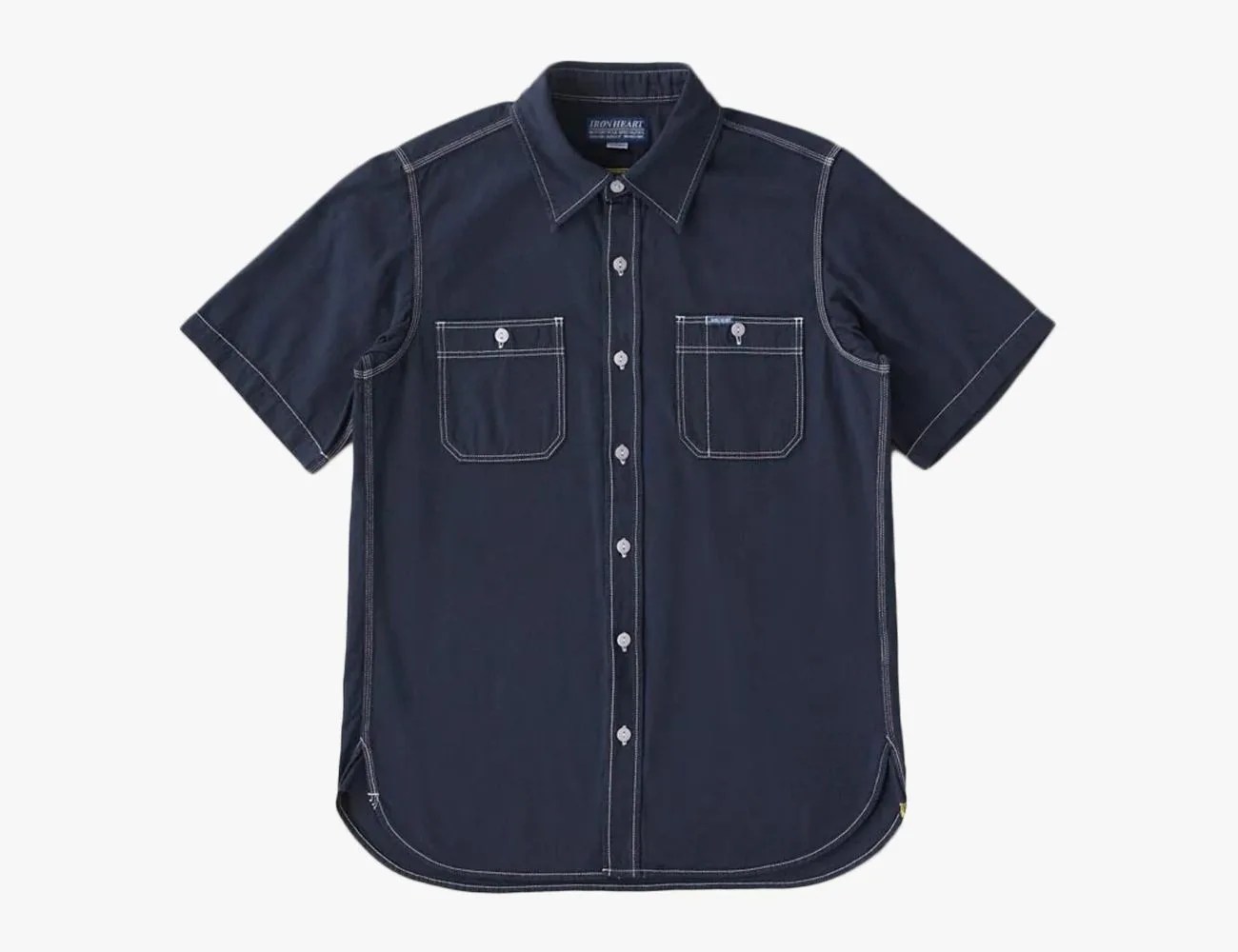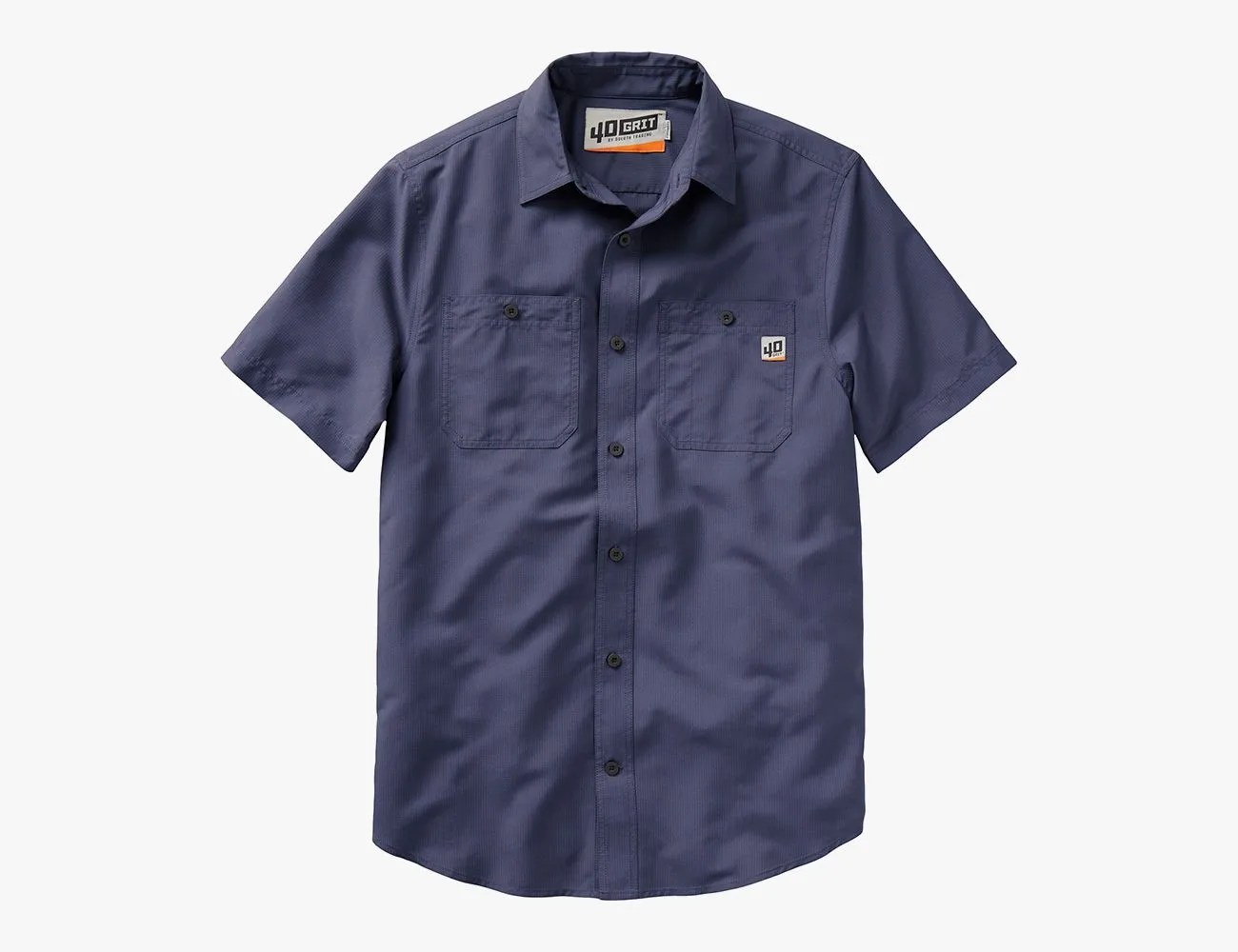The story of the work shirt begins in 1900 with Sears, which was then called Sears Roebuck & Co. The store sold a number of durable top layers called Working Shirts, a staple of the workwear category. They sold for $0.40 each or $4.80 for a dozen. ($0.40 then is equal to around $18 today.) As evident by the bulk ordering option, these were shirts Sears thought men would burn through and reorder often. After all, they were work shirts and being worn to blue collar jobs.
Around the same time, though, the US Military introduced its own version of a work shirt to its soldiers. Made from chambray, they were long-sleeved and came with two offset pockets on the chest, reinforced shoulders, double-yoked backs and roomy armholes for better mobility. These are a separate style, though, despite sharing the same name.
Products in the Guide
-
Patagonia Shop Shirt
Best Overall Work Shirt
Read more -
Filson Short Sleeve Snap Front Shirt
Best Upgrade Work Shirt
Read more -
Dickies Short Sleeve Work Shirt
Best Affordable Work Shirt
Read more -
Red Kap Short Sleeve Industrial Work Shirt
Read more -
L.L. Bean BeanFlex Twill Shirt
Read more -
Carhartt Rugged Flex Rigby Short Sleeve Work Shirt
Read more -
Wrangler RIGGS Workwear Chambray Work Shirt
Read more -
Iron Heart 285-OD Short Sleeve Work Shirt
Read more -
Duluth Trading 40 Grit Ripstop Performance Standard Fit Shirt
Read more
What Is a Work Shirt?
Work shirts, as we know them now, date back to the 1930s, when Dickies introduced its matching sets. They comprised long-sleeve and short-sleeve shirts with matching pants for men in commercial or industrial workplaces, where uniforms might not have been provided. Sure, the long-sleeve options offered better coverage, but the short-sleeve iterations were more comfortable, easier to move around in and cooler, too, especially in workplaces where it can get more than a little hot, especially since the shirts were made from twill.
Nowadays, work shirts have buttoned fronts, standard collars (no camp or spread collars) and two symmetrical chest pockets. Most are made from simple twill, but brands have slowly integrated better technology — like moisture-wicking or temperature-regulating fabrics, as well as stain-resistant treatments and even waterproof coatings.

